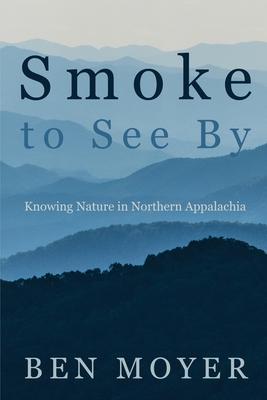Smoke to See By is a collection of 21 essays and stories, many never before published, written by award-winning essayist and columnist Ben Moyer. The collection tracks the writer's quest for intimate knowledge of, and personal connection to, the natural features of his home region, the foothills and ridges of Northern Appalachia. Readers will follow Moyer along mountain streams and through native woodlands to insightful encounters with rare salamanders, wild trout, rattlesnakes, bears, songbirds, and bobcats, through a hurricane that turned to a blizzard, and working with troubled adolescents in a therapeutic camping program. In this selection of works, ranging from lengthy to one succinct page, Moyer reveals the meaning, and connection to place, he finds in butchering a deer in a freezing garage or in gathering blackberries amid summer's heat. He also laments the loss of some familiar parts of the living landscape, unnoticed by many, as the region's ecology absorbs onslaughts from invasive species and responds subtly to climate in transition. But overall, Smoke to See By is a quietly joyous celebration of the ecological resilience and diversity of a region those without Moyer's perception might categorize as "unspectacular," yet which harbors its own marvelous natural wonders, offered to those who would know them up close.

Smoke to See By: Knowing Nature in Northern Appalachia
Smoke to See By is a collection of 21 essays and stories, many never before published, written by award-winning essayist and columnist Ben Moyer. The collection tracks the writer's quest for intimate knowledge of, and personal connection to, the natural features of his home region, the foothills and ridges of Northern Appalachia. Readers will follow Moyer along mountain streams and through native woodlands to insightful encounters with rare salamanders, wild trout, rattlesnakes, bears, songbirds, and bobcats, through a hurricane that turned to a blizzard, and working with troubled adolescents in a therapeutic camping program. In this selection of works, ranging from lengthy to one succinct page, Moyer reveals the meaning, and connection to place, he finds in butchering a deer in a freezing garage or in gathering blackberries amid summer's heat. He also laments the loss of some familiar parts of the living landscape, unnoticed by many, as the region's ecology absorbs onslaughts from invasive species and responds subtly to climate in transition. But overall, Smoke to See By is a quietly joyous celebration of the ecological resilience and diversity of a region those without Moyer's perception might categorize as "unspectacular," yet which harbors its own marvelous natural wonders, offered to those who would know them up close.